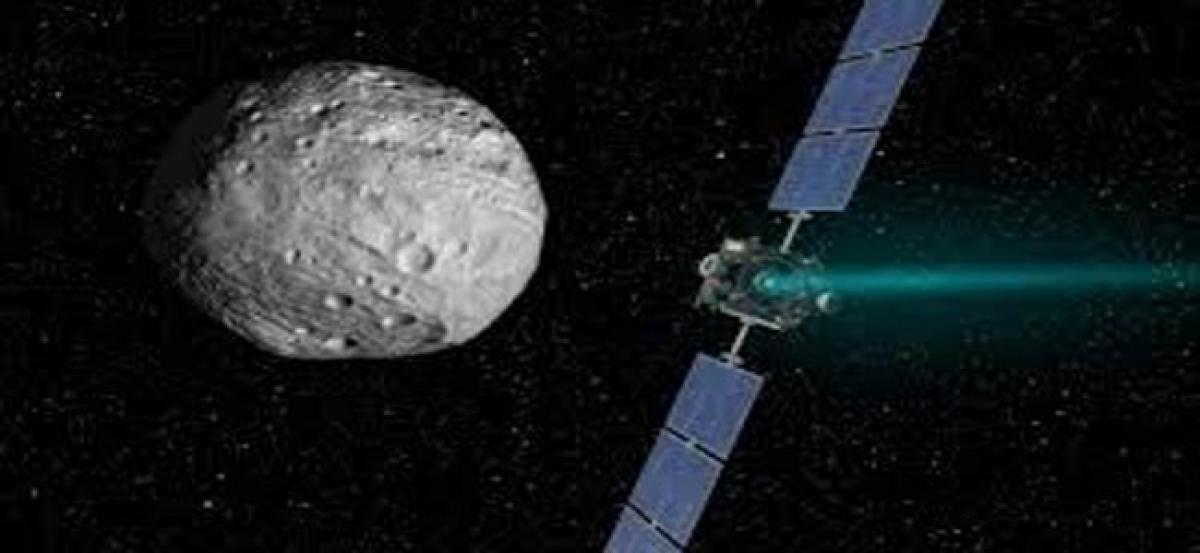Live
- CPM demands Rs 15k Rythu Bharosa aid
- Global meet in Manipal to explore ancient wisdom and modern therapy
- Homage paid to victims of Tirupati stampede
- Splendour marks Teppotsavam in Bhadrachalam
- Tirumala dazzles with colourful decorations
- Talpagiri temple decked up for Ekadasi
- 358th ‘Prakash Purab’ of Guru Gobind Singh to be held on Sunday
- IGP inspects police selections
- Triple-R displaced ryots hold protest
- TTD issues 1.2 lakh Vaikunta Dwara Darshan tokens
Just In
NASA's Dawn probe moving to lowest-ever orbit around Ceres


NASA\'s Dawn spacecraft is set to reach in early June its new, final orbit which will be less than 50 kilometres above the surface of the inner solar system\'s only dwarf planet -- 10 times closer than the spacecraft has ever been.
Washington: NASA's Dawn spacecraft is set to reach in early June its new, final orbit which will be less than 50 kilometres above the surface of the inner solar system's only dwarf planet -- 10 times closer than the spacecraft has ever been.
Soon after, it will begin collecting images and other science data, and that very low orbit will also garner some of Dawn's closest images yet, NASA said on Thursday. The spacecraft will collect gamma ray and neutron spectra, which help scientists understand variations in the chemical makeup of Ceres' uppermost layer.
"The team is eagerly awaiting the detailed composition and high-resolution imaging from the new, up-close examination," said Dawn's Principal Investigator Carol Raymond of NASA's Jet Propulsion Laboratory, Pasadena, California. "These new high-resolution data allow us to test theories formulated from the previous data sets and discover new features of this fascinating dwarf planet," Raymond added.
Dawn was launched in 2007 and has been exploring the two largest bodies in the main asteroid belt, Vesta and Ceres, to uncover new insights into our solar system. It entered Ceres' orbit in March 2015. The transfer from Dawn's previous orbit to its final one is not as simple as making a lane change. Dawn's operations team worked for months to plot the course for this second extended mission of the spacecraft, which is propelled by an ion engine. Engineers mapped out more than 45,000 possible trajectories before devising a plan that will allow the best science observations, NASA said.

© 2025 Hyderabad Media House Limited/The Hans India. All rights reserved. Powered by hocalwire.com






